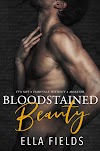
Elizabeth Short shown at age 19 in a police photo, taken in 1943 after she was arrested in Santa Barbara, California, for underage drinking—her first time living in Southern California.
She is more recognizable than any of Jack the Ripper’s victims, mostly because she was murdered at a time—after the Second World War, rather than in the late 1880s—when photography was far more advanced, but also because there are shots of what she looked like (smiling, no less) before her days were so cruelly ended. Although there was early gossip about her being in the escort business, it was wrong. Instead, she tried to make ends meet as a waitress, and like so many young women of her era, was said to dream of an acting career. She spent most of her life in Massachusetts (where she was born) or in Florida, and had been making her home in Los Angeles, California, for only about six months prior to her infamous slaying.
She was 22 years old, 5 feet 5 inches tall, with dark hair, blue eyes, and bad teeth. Her name was Elizabeth Short, but she’s best remembered as “The Black Dahlia.”
It was in the mid-morning of January 15, 1947—70 years ago today—that Betty Bersinger, a resident of the Leimert Park neighborhood, in south L.A., took a stroll outside with her 3-year-old daughter, only to happen across what she at first assumed must be a discarded mannequin tossed into a nearby vacant lot. Instead, it was Short’s corpse, naked and severed in twain at the waist, and drained of blood. The murderer had not only removed her intestines, but had slashed her mouth from ear to ear in a “Glasgow smile.”
The horrific, misogynistic nature of this crime, coupled with the victim’s attractiveness, drew widespread attention. While newspapers spared no ink on their shocking headlines (“Young L.A. Girl Slain; Body Slashed in Two”), police sought to identify the deceased and determine where she had most recently been seen, and by whom. Her fingerprints were matched to a set taken from Short back in 1943, when—during an earlier stay in Southern California—she was arrested for underage drinking. And police learned that she’d been missing since January 9, after last being seen in the lobby of downtown L.A.’s grand Biltmore Hotel. It wasn’t long before newspapers began fielding phone calls from people claiming to have information about

 Short or her killer, or to have murdered her themselves. As a true-crime Web site called The Lineup recalls,
Short or her killer, or to have murdered her themselves. As a true-crime Web site called The Lineup recalls, Witnesses who had supposedly seen Short during her missing week were, one by one, questioned and dismissed by investigators, who determined they were either outright lying or had mistaken Short for another woman.Time magazine explained in a 2015 retrospective that “One promising admission came a few weeks after the murder, from an Army corporal who said he had been drinking with Short in San Francisco a few days before her body was discovered—then blacked out, with no memory of his activity until he came to again in a cab outside New York’s Penn Station. … Asked if he thought he had committed the murder, the corporal said yes, and became a prime suspect until evidence emerged that he had actually been on his military base the day of Short’s death.” That tippling serviceman, Joseph A. Dumais, was among dozens of people, men and women both, who’ve confessed over the decades to doing in Betty Short, though the Los Angeles District Attorney’s office deemed fewer than half that number to be viable suspects. One of the latter was George H. Hodel, a physician who died in 1999—four years before his own son, then-retired L.A. homicide detective Steve Hodel, claimed in Black Dahlia Avenger: A Genius for Murder that his father was definitely Short’s slayer. (This 2004 episode of CBS-TV’s 48 Hours Mystery
Some 60 people came forward and confessed to the crime. Of these, 25 were seriously considered by the LAPD. Many of the suspects were household names, including Fred Sexton, the artist who created the Maltese Falcon prop in the iconic movie of the same name; Norman Chandler, publisher of the Los Angeles Times; [and] Jewish mobster Bugsy Siegel …
 examines Hodel’s assertions.) Doubts as to the veracity of that charge have been raised, however, and the Black Dahlia case remains open to this day.
examines Hodel’s assertions.) Doubts as to the veracity of that charge have been raised, however, and the Black Dahlia case remains open to this day.(Left) Mia Kirshner as Short in The Black Dahlia.
From the first, the nickname that came to be associated with Short’s liquidation—“The Black Dahlia,” which was a press concoction, or perhaps referred to the victim’s fondness for black attire, or was “a play on the then-current film The Blue Dahlia”—was guaranteed to draw public notice and incite macabre curiosity. That the killer was never identified or caught (just as with London’s Ripper) helped extend the notoriety of this case well past the lifetimes of its suspects and investigators. Fiction writers have long dined on the mysteries surrounding Betty Short’s gruesome demise. In 1962, Theodora Keogh—a granddaughter of President Theodore Roosevelt—published The Other Girl, which imagined Short engaging in an orgy and becoming the focus of sexual jealousy before finally losing her life. A fairly well-conceived 1975 NBC-TV film, Who Is the Black Dahlia? starring Efrem Zimbalist Jr., with Lucie Arnaz playing Short, was followed by John Gregory Dunne’s Dahlia-inspired True Confessions (1977). The most popular retelling of this story, with lurid embellishments, is certainly James Ellroy’s 1987 novel, The Black Dahlia, though Max Allan Collins’ 2001 yarn, Angel in Black (which finds his series gumshoe, Nate Heller, a bit too deeply involved with Miss Short and the circumstances of her murder), provides no fewer twists and bizarre turns. Angel in Black would make a good movie someday. Let’s hope, though, that if one is ever made, it’s superior to director Brian De Palma’s 2006 big-screen adaptation of Ellroy’s tale, which proved confusing even to viewers who’d read the book and were well-steeped in the facts surrounding the Dahlia inquiry.
It’s impossible now to look back at Elizabeth Short’s photos and not wonder what might have become of that young woman had her life not been terminated in violence and sensationalism. Seventy years on, her death and dismemberment are no less shocking than they were for Californians still trying to shed the fears brought on by World War II. Had she lived to see birthdays past her 22nd, might Short have eventually become the cinematic figure she hoped one day to be—a bit player, a character actress, or maybe a genuine star? Or was her path into the history books destined to be marked by torment and mutilation at the hands of an unknown party or parties? Like so many questions in this story, that one too is left unanswered.
READ MORE: “The Black Dahlia: Los Angeles’ Most Famous Unsolved Murder,” by James Bartlett (BBC News); “After 70 Years, the Black Dahlia Murder Still Haunts Los Angeles,” by Layla Halabian (LAist); “Nearly 70 Years After Her Murder, Here Are the Things We Still Don’t Know About Black Dahlia,” by Keri Blakinger (New York Daily News); “The Murder of the Black Dahlia: The Ultimate Cold Case,” by Stephen Karadjis (Crime Magazine); “I Never Knew Her in Life: The Black Dahlia Case in Popular Culture,” by Steven Powell (The Venetian Vase); “A Slaying Cloaked in Mystery and Myths,” by Larry Harnish (Los Angeles Times); “The Spot Where the Black Dahlia’s Body Was Found” (IAmNotaStalker.com); The Black Dahlia in Hollywood.






0 Comments